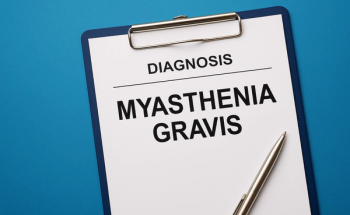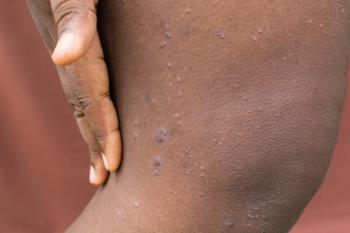
Coverage of our peer-reviewed research and news reporting in the health care and mainstream press.

Coverage of our peer-reviewed research and news reporting in the health care and mainstream press.

Multi-hit TP53 mutations significantly worsened survival in patients with myeloproliferative neoplasms (MPNs) and acute myeloid leukemia (AML), revealing critical prognostic insights.

Venetoclax demonstrated impressive efficacy in octogenarians with CLL, although treatment management posed some challenges.

Patients who see a cardiologist at least once a year are about 24% less likely to die in the following year.

Telitacicept is a dual-targeting agent that attaches to and blocks the effects of 2 key signaling proteins, B-lymphocyte stimulator and a proliferation-inducing ligand, to treat the B-cell–mediated autoimmune disease, generalized myasthenia gravis.

Nemolizumab significantly and safely improved itch and skin lesions for up to 2 years in patients with moderate to severe prurigo nodularis.

The approval of lenacapavir for use as pre-exposure prophylaxis is a significant step in reducing the incidence of HIV across the globe, including in areas where the PURPOSE trials were conducted.

Early trials found that both garadacimab and sebetralstat were safe when used in patients living with hereditary angioedema, which speaks to the promise of the FDA-approved garadacimab.

Making clinical trials easier to find for clinicians and making protocols for entering clinical trials more lenient can help to improve access to clinical trials on a national and local level, explains Eric Lander, MD, of Minnesota Oncology.

Surbhi Sidana, MD, MBBS, director of the Myeloma Disease Focused Group at Stanford University, provides a reintroduction to CARTITUDE-4 and insight on how this phase 3 investigation builds on previous findings of CAR T vs standard-of-care findings in relapsed/refractory multiple myeloma (RRMM)

Median overall survival was 5 months longer in patients with small cell lung cancer (SCLC) who received tarlatamab instead of chemotherapy after progression following platinum-based chemotherapy.

Democratic leaders assert the Emergency Medical Treatment and Labor Act (EMTALA) remains vital for emergency care, countering confusion from recent policy changes affecting abortion rights and patient safety.

High body mass index affects outcomes in acute lymphoblastic leukemia (ALL), highlighting the need for targeted interventions to improve patient survival rates and treatment efficacy.

A teledermatology program in Georgia helped identify patients with skin lesions that warranted in-person follow-up with a physician.

Knowledge gaps, financial burdens, and skepticism hinder Hispanic men’s participation in the National Diabetes Prevention Program, a study finds.

Remote care reduced readmissions and improved functional outcomes in COPD in a recent study.

A new consensus from the National Psoriasis Foundation outlines a clear benchmark for remission to improve treatment decisions and patient outcomes.

Shorter venetoclax durations in patients with acute myeloid leukemia (AML) and myelodysplastic syndromes (MDS) yielded comparable survival outcomes in a new study, challenging treatment norms.

The recent approval of lenacapavir could change the way that clinicians approach both treating and preventing HIV in those at risk, as long as the treatment can get into their hands.

The FDA approval marks the first approval of a type of pre-exposure prophylaxis that would only require 2 treatments per year.

This study highlights the vital role of caregivers in supporting women living with pulmonary arterial hypertension (PAH) and underscores the need to enhance caregiver support and address unmet needs to improve patient outcomes.

The recent approval of garadacimab can help to treat patients with hereditary angioedema (HAE) along with sebetralstat, which is awaiting FDA approval, explains Timothy Craig, DO, Penn State Health.

Early circulating tumor DNA (ctDNA) changes predict survival in mismatch repair or microsatellite instability–high (dMMR/MSI-H) metastatic colorectal cancer (mCRC) treated with immune checkpoint inhibitors (ICIs).

Patients with type 2 diabetes had a lower risk of glaucoma when they used glucagon-like peptide 1 (GLP-1) receptor agonists across multiple studies.

This study reveals that dupilumab is associated with a modestly increased risk of developing psoriasis, highlighting the importance of monitoring skin reactions during therapy.

CEPHEUS trial lead investigator Saad Z. Usmani, MD, MBA, FACP, FASCO, explains how the trial both builds on current knowledge of newly diagnosed multiple myeloma and how transplant-ineligible status may affect therapeutic decision-making.

The country has seen historic reductions in uninsured rates and improvements in affordability since the implementation of the Affordable Care Act, the Commonwealth Fund scorecard shows.

The Choose Medicare Act would establish a Medicare Part E that would give employers and the general public the ability to opt into the program.

Topical ruxolitinib cream shows promise as a treatment for inflammatory skin conditions, but lacks consistent data, indicating a need for further research into its use across various dermatologic conditions.

With the approval of the FDA, garadacimab can help patients with hereditary angioedema (HAE) prevent attacks by shutting down the contact pathway.

259 Prospect Plains Rd, Bldg H
Cranbury, NJ 08512
© 2025 MJH Life Sciences®
All rights reserved.
